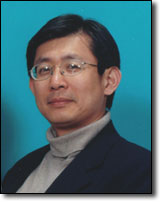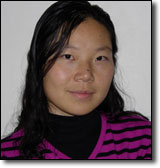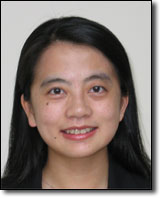
2005 IEEE International Conference on Acoustics, Speech, and Signal Processing
March 18-23, 2005 • Pennsylvania Convention Center/Marriott Hotel • Philadelphia, PA, USA
ICASSP
30th Anniversary
Tutorial TUT-6: Digital fingerprinting for multimedia forensics
Instructors
R. Liu; University of Maryland
M. Wu; University of Maryland
W. Trappe; Rutgers
J. Wang; University of British Columbia
Time & Location
Saturday, March 19, 09:00 - 12:00, Location: CC: Room 111
Abstract
The recent growth of networked multimedia systems has increased the need for techniques that protect the digital rights of multimedia. The protection of digital media has become a critical issue for the multimedia signal processing community, and recent research attention has shifted towards integrating security into the multimedia framework. Traditional protection alone (such as encryption, authentication and time stamping) is not sufficient for protecting data after it is delivered to an authorized user or after it has traveled outside a closed system. To address the post-delivery protection and introduce user accountability, a class of technologies known as digital fingerprinting is emerging. Digital fingerprints are unique labels inserted in different copies of the same content before distribution. Each digital fingerprint is assigned to an intended recipient, and thus provides forensic capability to trace the culprits who use their content for unintended purposes. In order to provide protection to the content, it is necessary that the fingerprints are closely associated with the content as well as difficult to remove from the content.
Due to the global nature of Internet, ensuring the appropriate use of media content, however, is no longer a traditional security issue with a single threat or adversary. Rather, new threats are posed by coalitions of users who can combine their contents to undermine the fingerprints. An improperly designed embedding and identification scheme in fingerprinting may make it possible for a small coalition of colluders to produce a new version of the content without detectable traces. These attacks, known as collusion attacks, provide a cost-effective method for removing an identifying fingerprint, and thus pose a strong threat to protecting the digital rights of multimedia. To mitigate the serious threat posed by collusion, theories and algorithms are being investigated and developed by the research community for constructing forensic fingerprints that can resist collusion, identify colluders, and corroborate their guilt.
As an important branch of multimedia forensics, digital fingerprinting is an interdisciplinary area that builds upon the synergies between signal processing theory, cryptology, coding theory, communication theory, information theory, game theory, and the psychology of human visual/auditory perception. The technology provides critical protection to a number of applications ranging from Hollywood cinema to military to intelligence.
The objectives of the tutorial are to provide audience with a broad overview of the recent advances in multimedia fingerprinting, traitor tracing, and multimedia forensics. We will present major design methodologies of collusion-resistant fingerprinting for multimedia, highlight the important developments in academia and industry, and outline a few open issues. As the methodologies employed span several diverse fields, the proposed tutorial will provide an introductory forum for a broad spectrum of researchers from different areas to acquire skills to engage in the interdisciplinary field of multimedia forensics.
Background Knowledge Expected of the Participants:Basic understanding of image processing, communications, and signal processing.
Presenter Information

K. J. Ray Liu received the B.S. degree from the National Taiwan University in 1983, and the Ph.D. degree from UCLA in 1990, both in electrical engineering. He is a Professor of Electrical and Computer Engineering Department and Institute for Systems Research of University of Maryland, College Park. His research contributions encompass broad aspects of signal processing algorithms and architectures; multimedia communications and signal processing; wireless communications and networking; information security; and bioinformatics, in which he has published over 300 refereed papers.
Dr. Liu is the recipient of numerous honors and awards including IEEE Signal Processing Society 2004 Distinguished Lecturer, the 1994 National Science Foundation Young Investigator Award, the IEEE Signal Processing Society's 1993 Senior Award (Best Paper Award), IEEE 50th Vehicular Technology Conference Best Paper Award, Amsterdam, 1999. He also received the George Corcoran Award in 1994 for outstanding contributions to electrical engineering education and the Outstanding Systems Engineering Faculty Award in 1996 in recognition of outstanding contributions in interdisciplinary research, both from the University of Maryland. Dr. Liu is a Fellow of IEEE.
Dr. Liu is the Editor-in-Chief of IEEE Signal Processing Magazine and was the founding Editor-in-Chief of EURASIP Journal on Applied Signal Processing. Dr. Liu is a Board of Governor and has served as Chairman of Multimedia Signal Processing Technical Committee of IEEE Signal Processing Society.

Wade Trappe received his B.A. degree in Mathematics from The University of Texas at Austin in 1994, and the Ph.D. in Applied Mathematics and Scientific Computing from the University of Maryland in 2002. He is currently an assistant professor at the Wireless Information Network Laboratory (WINLAB) and the Electrical and Computer Engineering Department at Rutgers University. His research interests include multimedia security, cryptography, wireless network security, and computer networking. While at the University of Maryland, Dr. Trappe received the George Harhalakis Outstanding Systems Engineering Graduate Student award. Dr. Trappe is a co-author of the textbook "Introduction to Cryptography with Coding Theory", Prentice Hall, 2001. He is a member of the IEEE Signal Processing, Communication, and Computer societies.

Z. Jane Wang received the B.S. degree from Tsinghua University, China, in 1996, with the highest honor, and the M.S. and Ph.D. degrees from the University of Connecticut in 2000 and 2002, respectively, all in electrical engineering. While at the University of Connecticut, Dr. Wang received the Outstanding Engineering Doctoral Student Award. She is currently an assistant professor at the Electrical and Computer Engineering Department at the University of British Columbia. Previously, she held the position of a Research Associate at the Department of Electrical and Computer Engineering, and the Institute for Systems Research at the University of Maryland, College Park. Her research interests are in the broad area of statistical signal processing, information security, genomic signal processing and statistics, and wireless communications.

Min Wu received the B.E. degree in electrical engineering and the B.A. degree in economics from Tsinghua University, Beijing, China, in 1996 (both with the highest honors), and the M.A. degree and Ph.D. degree in electrical engineering from Princeton University in 1998 and 2001, respectively. She was with NEC Research Institute and Signafy, Inc. in 1998, and with Panasonic Information and Networking Laboratories in 1999. Since 2001, she has been an Assistant Professor of the Department of Electrical and Computer Engineering and the Institute of Advanced Computer Studies at the University of Maryland, College Park.
Dr. Wu's research interests include information forensics and security, multimedia signal processing, and multimedia communications. She co-authored a book "Multimedia Data Hiding" (Springer-Verlag, 2003) and holds four U.S. patents. She is a member of the IEEE Technical Committees on Multimedia Signal Processing and on Multimedia Systems and Applications. She served as Publicity Chair of 2003 IEEE International Conference on Multimedia and Expo, and a guest editor of the Special Issue on Media Security and Rights Management for the EURASIP Journal on Applied Signal Processing. Dr. Wu received a CAREER award from U.S. National Science Foundation in 2002 and a George Corcoran Faculty Award from University of Maryland in 2003. In 2004 she was selected by the MIT Technology Review Magazine as one of the 100 top young innovators whose contribution to emerging technologies will profoundly influence the world.